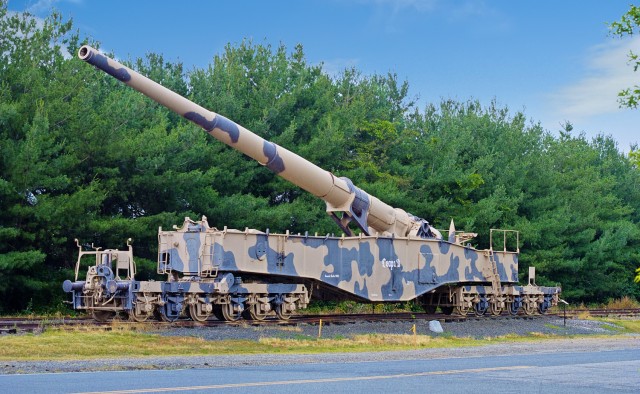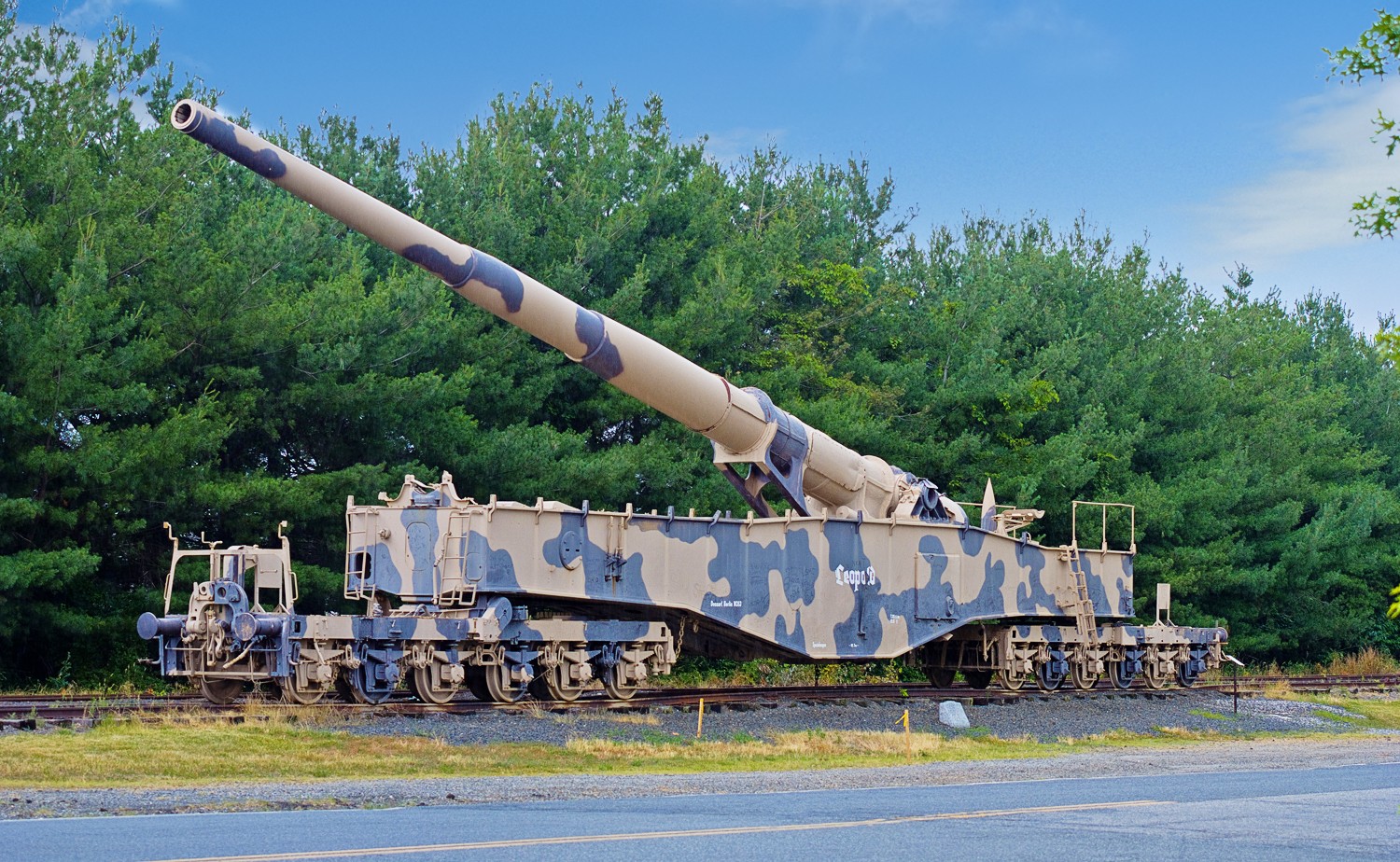FORT LEE, Va. (Nov. 25, 2010) -- One of the largest land-based artillery pieces ever built soon will be on permanent display at Fort Lee.
Anzio Annie, the K5-series rail gun named for the World War II beachhead in Italy, is a massive armament that was built by the Germans in the 1930s and captured by the United States during the war.
Three of Annie's components - two 12-wheel rail cars and the gondola - were transported by truck to Fort Lee Nov. 18 from the U.S. Army Ordnance Museum at Aberdeen Proving Ground, Md., Annie's home for more than 65 years.
Annie's 70-foot barrel is scheduled for delivery within two weeks, said Chris Semancik, movement project manager. The K5's move is part of the U.S. Army Ordnance School's relocation under the Base Realignment and Closure mandate of 2005.
Semancik said the relocation has been difficult due to Annie's size, but it has gone as well as could be expected.
"In many regards, we are ahead of schedule," he said of the K5, which is more than 100 feet long and weighs 218 tons when fully assembled. "We're doing things faster than was anticipated."
Several contractors are involved in Annie's disassembly and movement. Semancik said the effort, although challenging at times, has yielded some unexpected but positive results.
"We've learned so much taking this gun apart," he said, noting no owner's manual was available. "We got into the unknowns with the mechanics - just driving the pins out for the elevation systems to release the barrel was an epic mechanical feat. It was a lot of discovery-learning, feeling our way forward."
That also meant changing transport plans. The gun tube is about 27 feet shorter than a C-130 aircraft but is roughly three times its weight at 116 tons. That makes it a potential monster to move on highways, said Semancik.
"We're 90 percent sure it's going to go by rail," he said, "because there is a limited number of 19-axle trucks in the country. I've been told that there are only three to five trucks available that could move that kind of weight over the road."
Which is why such an armament was equipped for transport by rail in the first place. Rail was a less arduous way to move heavy artillery pieces over long distances in the 19th and first half of the 20th century. The idea was first implemented, ironically, during the Siege of Petersburg, which bounds Fort Lee, and the Battle of Savage's Station in nearby Henrico County.
Twenty-five K5-series guns were produced by the Germans. They used them throughout the European theater during WW II, as far south as the "Italian front, the Atlantic wall and on the Russian front..." said Semancik. "They were slow to fire, but the round was devastating. The K-5 shells had a distinct sound, and it would create a crater large enough to swallow a Sherman Tank. It was a feared weapon."
Annie is actually a conglomeration of parts from two K5s used in the Anzio campaign, the "Robert" and "Leopold." The Allies called them Anzio Annie and Anzio Express. Semancik said the pieces tend to evoke deep sentiments of those who served during the war, especially at Anzio.
"It's a touchstone for them," said Semancik. "It is one of the most tangible pieces of the enormous amount of firepower they faced getting on that beachhead and breaking out of it."
More than 7,000 Allied Soldiers died during the amphibious assault and resulting battle at Anzio in January 1944.
Dr. Joe Rainer, chief of museums and historical properties, Training and Doctrine Command, said the K5 was a significant acquisition.
"This piece is a very important part of Ordnance Corps history," he said, noting that only one other K5 exists. "Ordnance is responsible for maintaining and repairing armaments, but it's also responsible for technical intelligence. This is one example of how technical intelligence and capturing enemy equipment was important in developing U.S. equipment. A direct by product of this gun and its study was the atomic cannon. We definitely improved upon this technology."
At its original home in Aberdeen, Annie was a popular piece and should generate a fair amount of interest in central Virginia as well, said Semancik.
"People have come from all over the world to view this gun," he said. "It has a world-famous reputation, and it was a centerpiece for the Ordnance Corps (at Aberdeen). Historians, rail fans, model makers and others are all interested in its movement."
Military members, especially those attending the various schools here, will benefit the most from Annie's presence at Fort Lee, said Semancik.
"Students can come down here and look at this and say, 'This is how they did it in the past, but what can I take away from this and apply it to my experiences in the future'' That's where it's value-added for the Army: we can use pieces like Annie to teach Soldiers as well as the American public."
Annie is just one piece of equipment that will make its way down to Fort Lee. Hundreds of small arms, ammunition pieces and other equipment will eventually be relocated here as the Ordnance Corps completes its move next year.
Counting the quartermaster and women's history collections that are already here, Semancik said Fort Lee will feature one of the largest artifact collections the Army has in one location.




Social Sharing